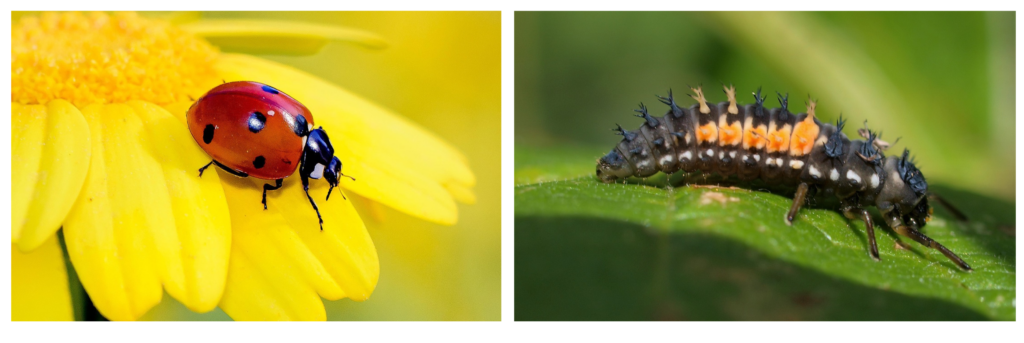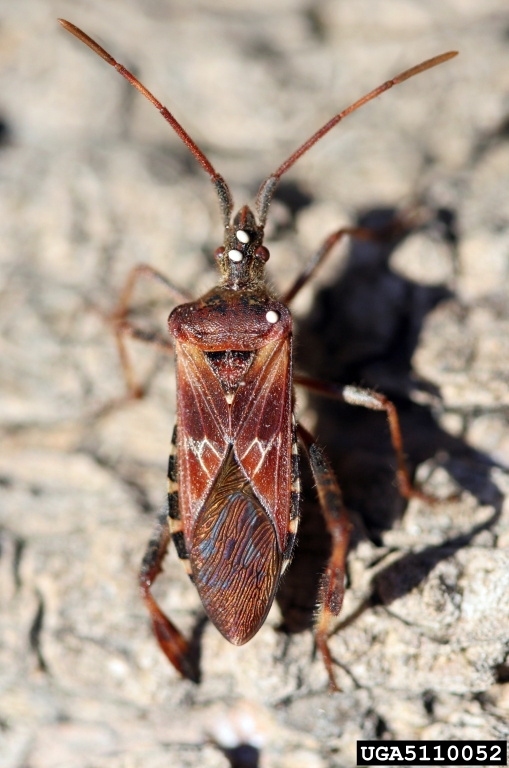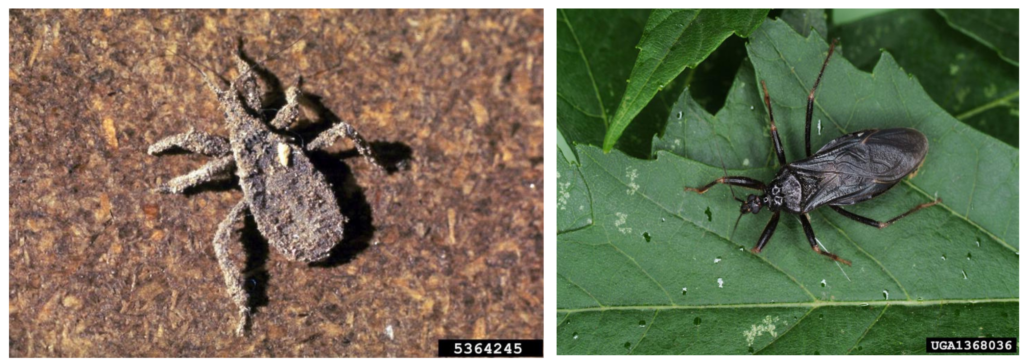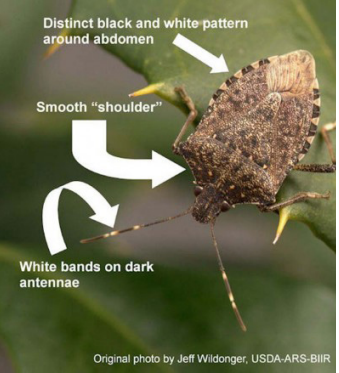From the Hort Desk
- 2023-03-05
- By mkirk
- Posted in Horticulture, The Garden Buzz
By Lisa Mason, CSU Extension Horticulture Agent
Are Nuisance Invaders Bugging You?
Extension staff receives year-round questions about insects we find inside our homes. People want to know where they come from, what the identification is, and how they can prevent them from entering the home.
Entomologists are curious about the insects and arthropods in our homes, too. A 2016 study at North Carolina State University found over 500 different types of arthropods in homes. The majority of the arthropods were harmless, and some were actually beneficial (Bertone et al., 2016).
While the biodiversity numbers may sound interesting to an entomologist, for some homeowners it may sound alarming. It is important to note that the vast majority of insects found in homes are completely harmless to people. Many of these insects are considered “nuisance invaders,” a term used to describe insects that accidentally wander in or congregate in or near people’s homes. Nuisance invaders share four common characteristics:
- They cannot reproduce inside the home.
- They do not feed on anything inside the home.
- They do not cause any damage.
- They are not harmful to people.
Common nuisance invaders include insects that overwinter as adults that are looking for a shelter and a place to keep warm. People’s homes are very appealing to these overwintering insects.
Common nuisance invaders include the following:
Lady beetles (Family: Coccinellidae)
Colorado has approximately 80 different species of lady beetles. They are beneficial species in the ecosystem because they feed on aphids and other pests. The most common species, the convergent lady beetle, migrates in large numbers and sometimes can congregate around homes.
Control options include: 1) Repairing screens; sealing up the cracks, crevices, and entry points into the home, and 2) vacuuming the insects. Pesticides are generally not recommended for lady beetle control.
Note that lady beetles go through a full metamorphosis. Lady beetle larvae look very different than the adults, but they are important predators, eating up to hundreds of aphids per day. Learn more about lady beetles here.

Western conifer seed bug (Leptoglossus occidentalis)
Western conifer seed bugs attract a lot of attention when they enter homes because of their large appearance, and they can emit a defensive odor. They are often found in homes in the fall and winter. They are completely harmless. They feed on the seeds of conifers trees like pines, Douglas-fir trees, and other shrubs. Since they are looking for a warm place for the winter, individuals may wander into people’s homes. They cannot survive more than a week or two without water.
Control options include: The most efficient option is to seal the home of all cracks and crevices before autumn. Cleaning up debris near the house will limit overwinter places to decrease the likelihood of them wandering into your home. Vacuuming up the individuals is another option. Currently, there are no pesticides labeled for this insect. Learn more about Western conifer seed bugs here.
Western conifer seed bugs sometimes also attract attention because they look similar to the “kissing bug” or conenose bugs (Triatoma spp.) that are known to carry Chagas disease. They are NOT conenose bugs. Colorado has only one species of conenose bug, and it is extremely rare. Some individuals have been found in rural, undisturbed areas of Western Colorado. To date, there have been no recorded infections of Chagas disease from Colorado. Learn more about conenose bugs here.

Masked hunters (Reduvius personatus)
Masked hunters are one of approximately 23 species of assassin bugs (Family: Reduviidae) found in Colorado. All assassin bug species except for the one species of conenose bug prey on other insects, making them an important, beneficial part of the ecosystem. Masked hunters are common both outdoors and indoors year round. The nymphs (immature form of the insect) attract attention because they often camouflage themselves with lint, sawdust, or dirt while hunting for prey. Masked hunters will help keep the pest population lower in homes, but it is important to note that if they are handled, they will bite. Controlling assassin bugs in the home is generally not needed because they are solitary insects. Learn more about masked hunters here.

Boxelder bugs
Boxelder bugs tend to congregate in large numbers around or in people’s homes since they overwinter as adults. They can be a challenge in the fall, winter, and spring. They prefer the warm south and west exposure of buildings. Usually when they congregate in large numbers, there is a female boxelder tree nearby because they feed on the seeds.
Removing the nearby boxelder tree is the most efficient long-term solution. Sealing up cracks and crevices around the house can prevent them from entering the home. Vacuuming or sweeping the bugs once they enter the home can provide temporary relief. When smashed, they can leave red stains or markings on fabric in the home. Pesticides usually are not very effective at boxelder bug control. Laundry detergent with water can provide some control when applied directly to the congregation of insects, but laundry detergent may damage nearby plants. Learn more about boxelder bugs here.
Similar in appearance, goldenrain tree bugs, small milkweed bugs, or elm seed bugs may also be a nuisance if their host plant is nearby. All three feed on the seeds of their respective plant: goldenrain trees, milkweed plants, and Siberian elm trees. Elm seed bugs are a newer pest in Colorado, and currently are found only on the West Slope of Colorado. Sealing up the house is the most efficient long-term control. If they enter the home, vacuum or sweep the bugs. Spraying appropriate insecticides around the perimeter of the home, especially around windows and doors, may provide some control for elm seed bugs.

Elm leaf beetles
Just like other nuisance invaders, elm leaf beetles (Xanthogaleruca luteola) overwinter as adults, and they can find their way into people’s homes. During the summer, they are bright yellow in color, and they turn a dark gray to dark green color when they overwinter. The larvae skeletonize the leaves of elm trees. A variety of insecticides are available for application on the tree. If they are a nuisance in the home, sealing up cracks and crevices is most helpful. Vacuuming up the adults is also helpful. Spot insecticide treatments may help temporarily around entrances such as doors and windows. Learn more about elm leaf beetles and the control options here.

Stink bugs
Colorado has a variety of stink bugs (Family: Pentatomidae) species. Common species are typically green or brown in color. Some feed on plants and some are beneficial by feeding on other insects. Stink bugs have the potential to cause damage to crops. As a nuisance invader, typically individuals will wander into homes accidentally, and they will not appear in large numbers. The brown marmorated stink bug is an invasive species that is found in Colorado and can be seen fairly often. This species has the potential to damage a variety of crop species. You can differentiate a brown marmorated stink bug from other stink bugs by looking for the distinct black and white markings around the abdomen, and the white bands on the antennae. True to their name, stink bugs emit an unpleasant odor. Learn more about stink bugs here. Learn more about the brown marmorated stink bug here.

Learn more about nuisance invaders
With so much insect and arthropod biodiversity, there is always more to learn. Check out this list of CSU Extension publications to learn more about common insects and arthropods.
CSU Extension in Arapahoe County can assist with identification of nuisance invaders or other insects through photos and samples. Contact the office at 303-730-1920 or email MasterGardener@arapahoegov.com.
Horticulture Resources
- Garden Buzz Archives
- CSU Extension Resources
- Colorado Master Gardener Program
- Foothills to Plains Native Plant Master Program
- Native Bee Watch Community Science Program
- The Co-Hort Blog
- PlantTalk Colorado
- Soil Testing
- Plant Select
- Emerald Ash Borer
- Japanese Beetle
- Colorado State Forest Service
- Ask an Expert


